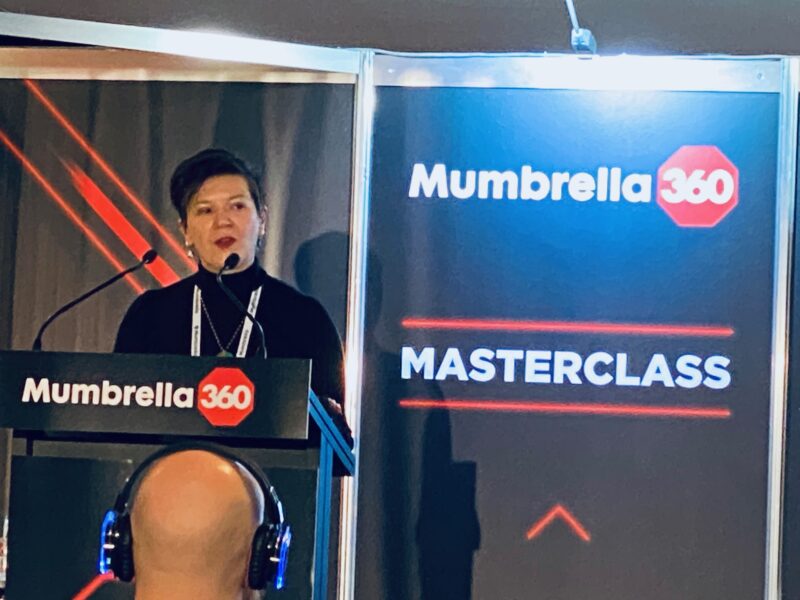How to protect your brand from ‘greenwashing’
Fiona Nixon, chief strategy officer at Think HQ, presented a Masterclass at our recent Mumbrella360 conference on the controversial topic of greenwashing, and the potential impact on brands. Here, she expands on the subject, and explains why it's dangerous to fake it until you make it.
Greenwashing has been described as a “deceitful marketing gimmick” intended to mislead consumers.
This happens when an organisation spends more time and money on marketing itself as environmentally friendly than on actually minimising its environmental impact.
There is little doubt that sustainability is important to consumers and ESG claims are driving growth. However, consumers don’t have the time, energy or knowledge to research and validate claims themselves.

This leaves the door open to greenwashing by companies and organisations who want to benefit from the rise in values-driven consumerism and are relying on consumers not digging deep.
At its simplest, greenwashing is where there is a gap between the claim you are making and the action you are taking.
In March 2023 ASIC released its first scan of the Australian market after foreshadowing in early 2022 that it would be placing greater scrutiny on greenwashing and taking action to protect consumers.
A scan of 247 businesses found 57 per cent had made concerning claims about environmental credentials.
At the far end of the greenwashing spectrum are misleading statements such as the first case before the courts – ASIC launches first Court proceedings alleging greenwashing. ASIC alleges that Mercer Superannuation promoted its Sustainable Plus investment option as excluding fossil fuels. However, closer examination found investments in fossil fuel companies in the portfolio, prompting ASIC to launch civil proceedings in the Federal Court against Mercer earlier this year.
At the other end of the spectrum, greenwashing is the use of vague and unclear terms – green, eco-friendly, responsible.
And in the middle are claims that are absolute or unsubstantiated – 100% plastics free, zero emissions.

Fiona Nixon presenting a Masterclass at the recent Mumbrella360 on the topic of greenwashing, and the potential impact on brands.
Tips to avoid greenwashing
If you can’t back it up with plenty of detail and a clear plan – don’t say it
Your credibility is in the detail – announcing a net zero target without an accompanying plan and transparency about your current emissions portfolio doesn’t cut it.
Example: JBS Meats (global Brazilian meat producer and feedlot operator – owner of Primo brand in Australia) – announced net zero emissions by 2040 and put it all over livery and marketing campaigns. The US National Advertising Division handed down a recommendation to withdraw the claims in February 2023 on the basis that there was no evidence to show this claim was achievable.
Don’t make claims based on half the picture
Many companies are investing in emissions reduction programs, tree planting or switching the focus of their business towards lower carbon products and services. However, for many this investment is small compared to ‘business as usual’ which raises the question about how prominently these initiatives are marketed.
Example: Following the BP Deepwater Horizon oil platform disaster – the largest marine drilling oil spill in history which claimed 11 lives and cost US$61.6 Billion – BP started to invest in some renewable energy projects. An advertising campaign across the UK, US, and Europe in 2019 featuring these investments and a brand statement about a low carbon future attracted an OECD complaint brought by ClientEarth.
The basis of the complaint was that BP was obscuring the fact that while they were making renewable energy investments, these were tiny in comparison to their investments in new oil and gas projects. In reality they were only telling part of the story. The campaign was withdrawn.

Transparency is critical – and it’s uncomfortable
The credibility of ESG claims relies heavily on transparency – of emissions, supply chain factors, production methods etc. Traditionally marketers avoid talking about the things that detract from the product or are works in progress. This creates a tension that can be difficult to resolve. Greenwashing comes into the picture when transparency efforts themselves fail.
Example: In the US, international fast-fashion retailer H&M was sued in 2022 and received complaints from the Norwegian and Dutch consumer protection agencies over misleading claims about its Conscious Choice Collection. The company had contributed to the development of a transparency tool, Higgs Index, which grades the environmental impact of the production of a garment compared to a standard process. These grades were published on its website.
The problem arose when discrepancies were found between the grades being reported on the H&M website and those on the Higgs Index website. For example – a garment that was rated as using 20 per cent LESS water on H&M was rated as 20 per cent MORE on the Higgs Index website. Soon after the complaints were made, H&M took down the ratings claiming a technical issue. They haven’t reinstated it.

Build your technical competence
ESG is complex and it’s technical – and whether they like it or not, marketers need to be technically competent. They need to be able to join the conversations with legal, corporate affairs and sustainability people to navigate ESG issues and still come out being able to tell the most compelling stories they can.
Marketers need to understand net zero, carbon neutral and how carbon accounting and carbon offsetting work. They need to understand the nuances so they can close the gap between claim and action and avoid greenwashing.
—
Fiona Nixon is chief strategy officer at Think HQ.

Have your say